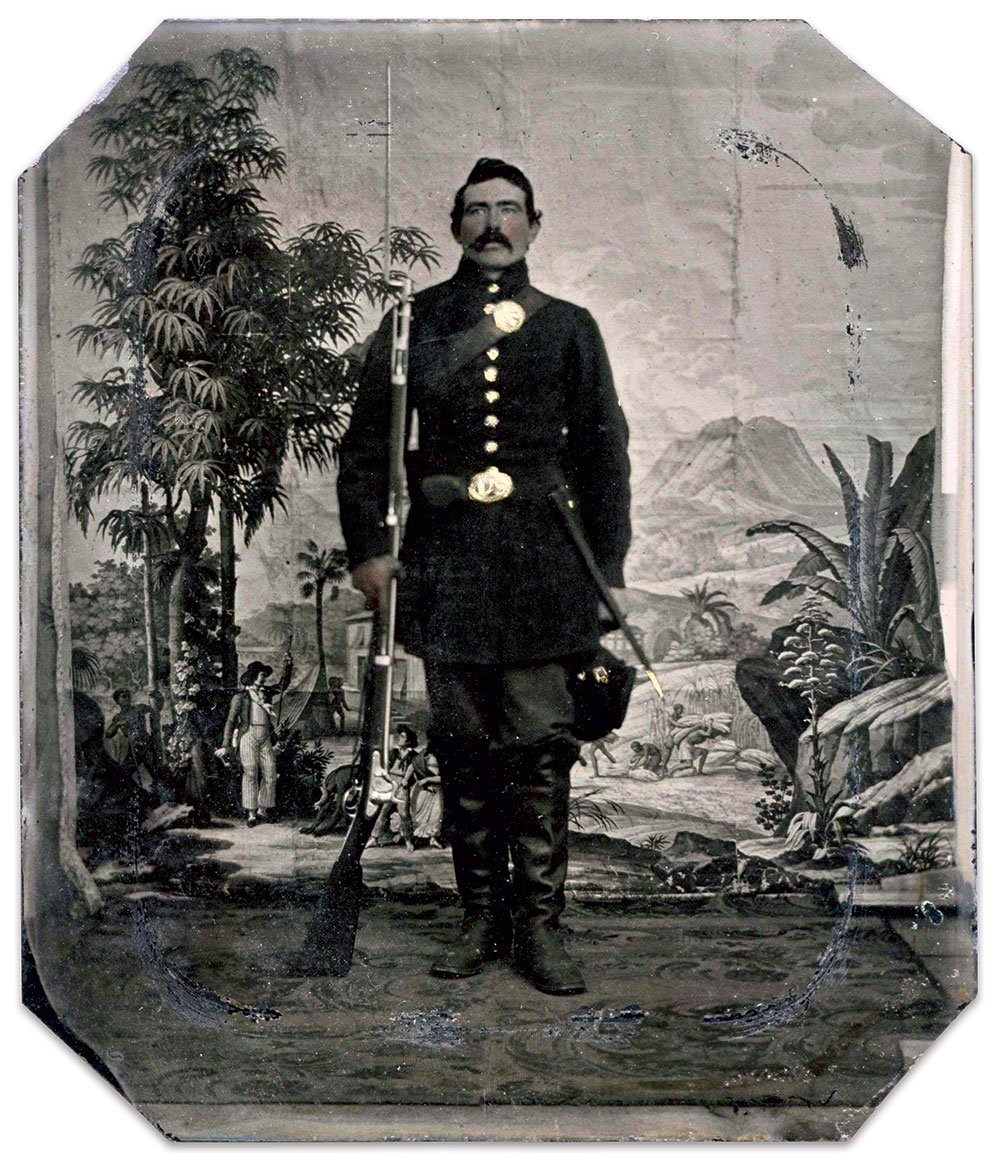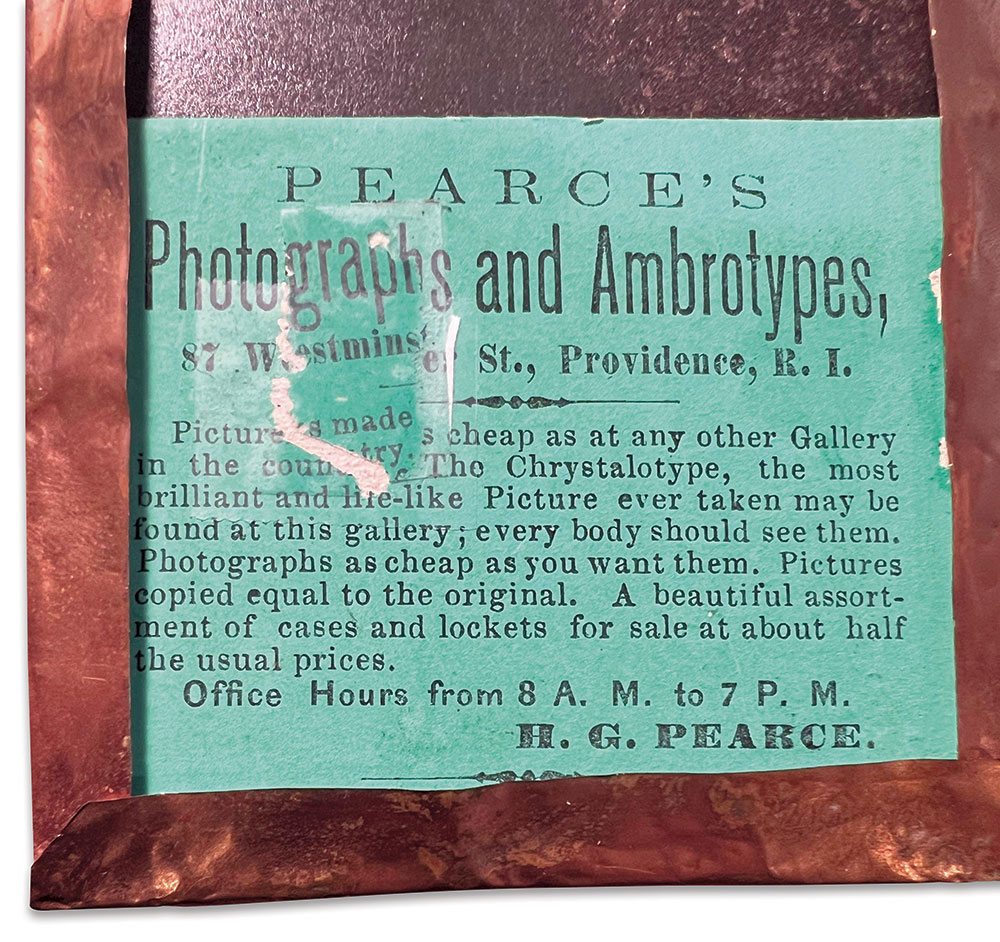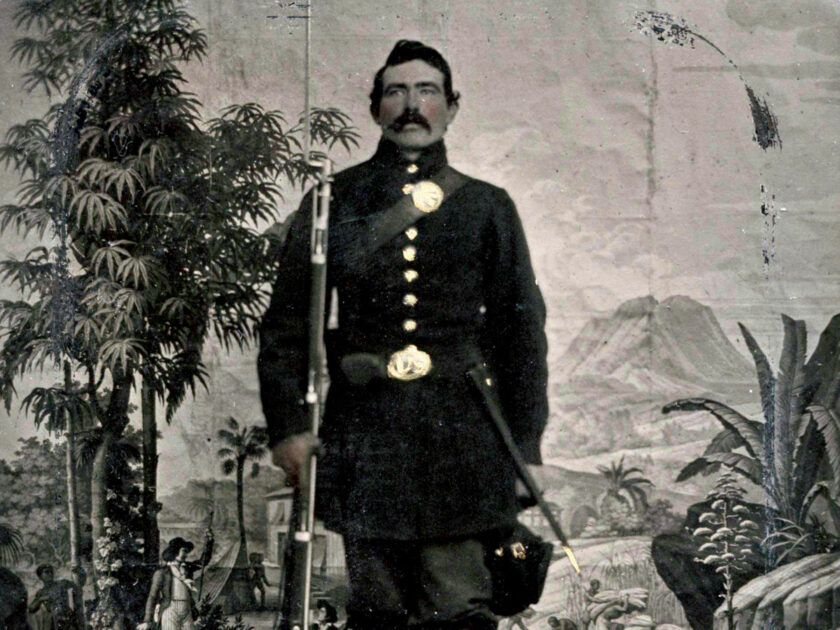By Adam Ochs Fleischer
The backdrop featured in this installment is noteworthy because the content of the scene is compelling and subject to interpretation. Usually, backdrops of the era are rather two-dimensional, if you’ll excuse the pun. This is certainly not the case with photographer Henry G. Pearce’s Caribbean Plantation Backdrop.
The photographer
A cursory search has found Howard G. Pearce a somewhat reclusive figure. He does seem to be listed in census records in Rhode Island and Massachusetts, but not with the occupation of photographer.
Though not much is known about Pearce, he apparently ran a productive studio. A volume of portraits he produced in the carte de visite format during the Civil War era still exists today. Interestingly, he is one of a number of Rhode Island photographers credited as using a technique in their studios to give the impression that their subjects were seated next to a window. Both the window and what it revealed “outside” were drawn or painted. Similar to a backdrop, this window device gave depth to portraits and conjured a sense of place.
The backdrop


This backdrop is exceptional in its content and rendering. It shows a plantation scene with enslaved people carrying what is possibly sugarcane, and its topography and foliage appear tropical. There is a mountain in the far distance. In the foreground on the viewer’s left, a white man, perhaps the plantation’s owner or an overseer, wields a stick and pipe. An enslaved man kneels prostrate before him. A pair of white subjects, maybe children, stand before the enslaved man in a protective pose. To the extreme left, in the forest, another enslaved man flees the scene. The manner of the subjects’ dress, the topography shown, and its general aesthetic all strongly suggest this backdrop depicts slavery in the Caribbean.
The illustration is expertly portrayed, made by the hand of a trained artist. Its depth of field is realistically represented and there is a wealth of detail.
Pearce’s backdrop inspires several different interpretations. One is that it was produced merely as a depiction of a faraway place, perhaps well before the Civil War. Backdrops featuring “exotic” scenery are a genre of the period and have been well-represented in this column. That this backdrop includes content relating to slavery and was used while taking portraits of Union Civil War soldiers may have been incidental. After all, the Caribbean islands were closely associated with slavery as the principal market for enslaved labor. By 1848, slavery was abolished in the British and French Caribbean.
Another theory is that Pearce’s backdrop was produced to promote the abolitionist cause. The inclusion of an overseer-type figure inspiring fear and submission is an explicit representation of cruelty. Meanwhile, the two white subjects in a protective stance explicitly represent an attempt to protect enslaved people.
Both interpretations raise thought-provoking questions.
Special thanks to Rob Morgan.
Adam Ochs Fleischer is a passionate researcher of Civil War photography and an admitted image “addict.” He began collecting in high school and quickly became obsessed. He lives in Columbus, Ohio.
SPREAD THE WORD: We encourage you to share this story on social media and elsewhere to educate and raise awareness. If you wish to use any image on this page for another purpose, please request permission.
LEARN MORE about Military Images, America’s only magazine dedicated to showcasing, interpreting and preserving Civil War portrait photography.
VISIT OUR STORE to subscribe, renew a subscription, and more.

